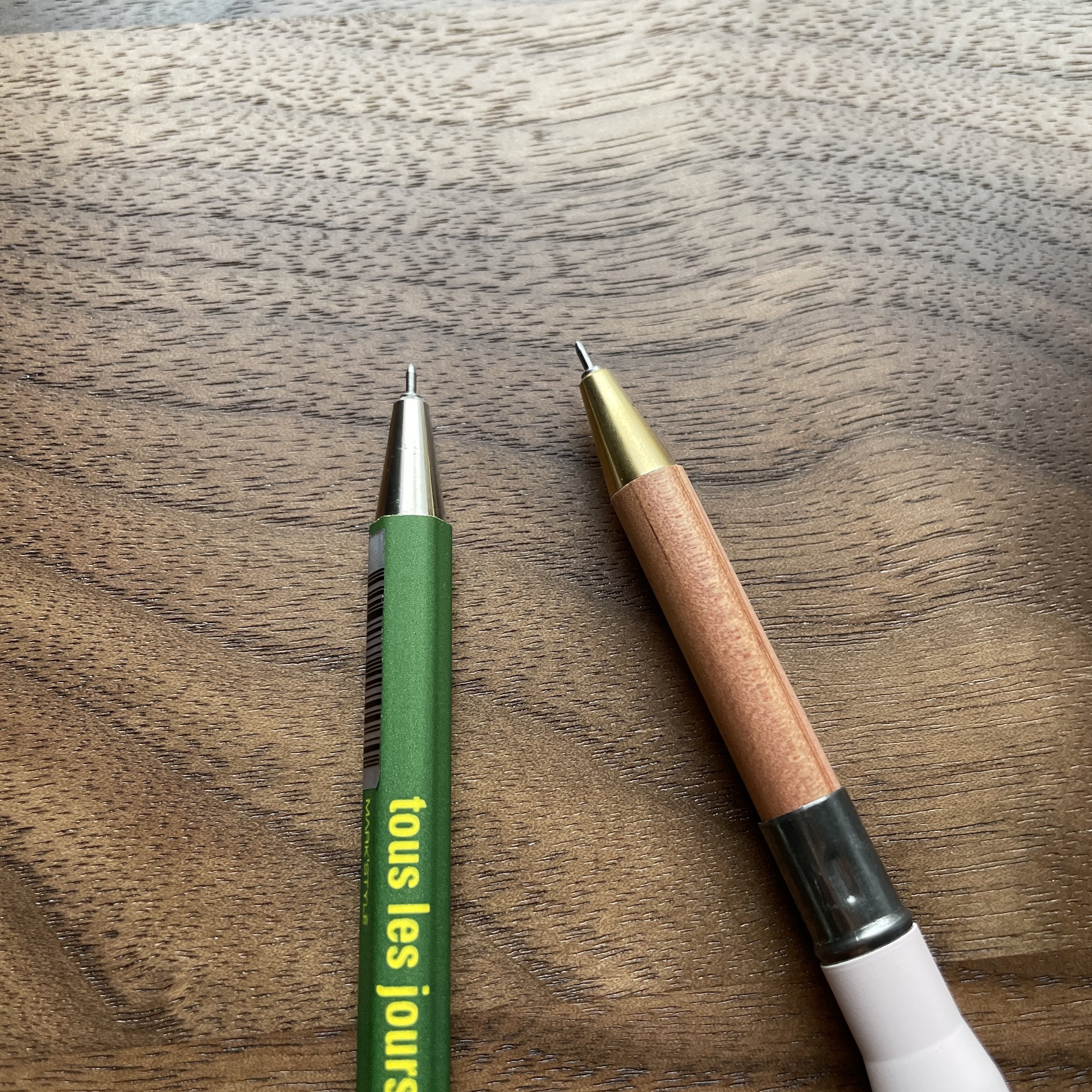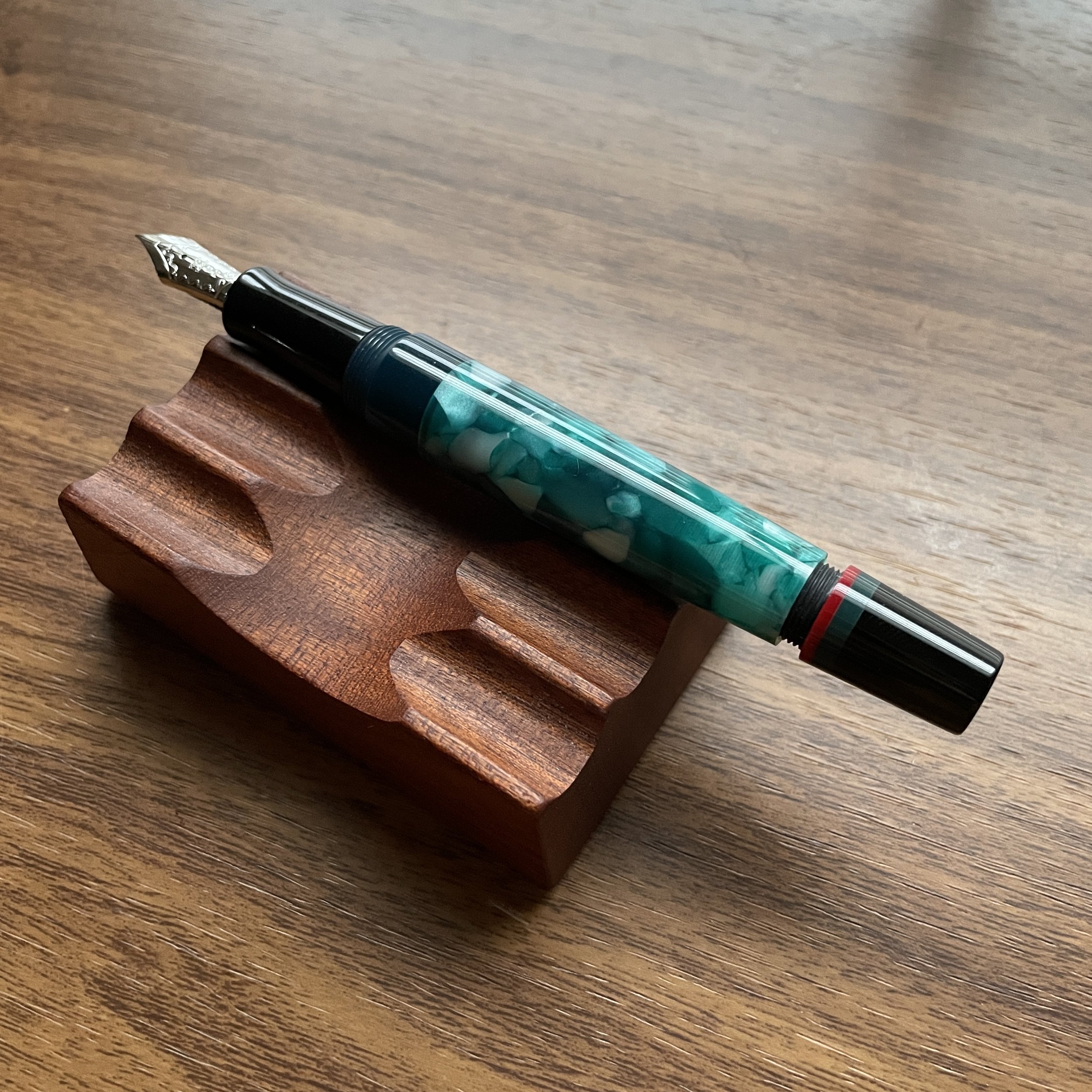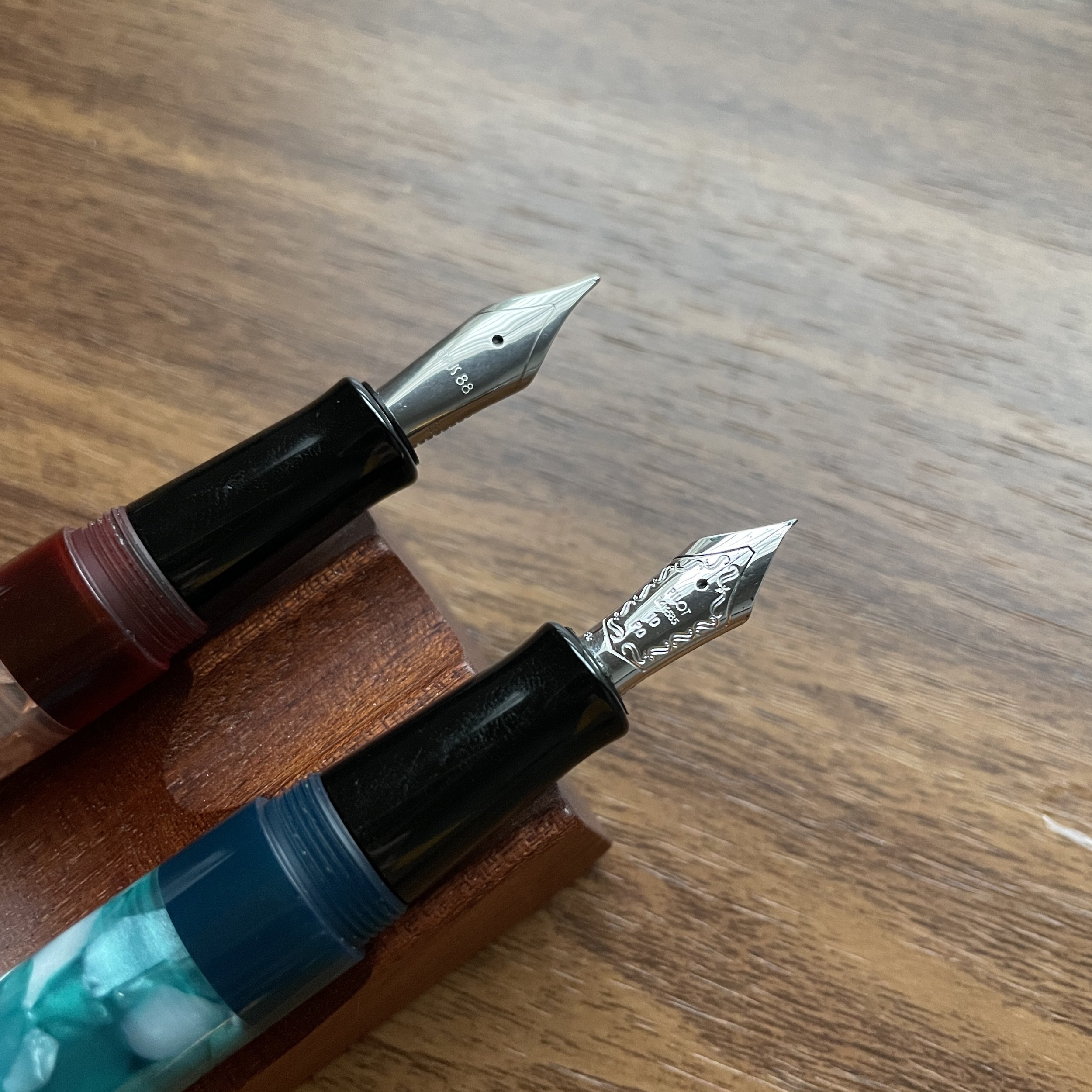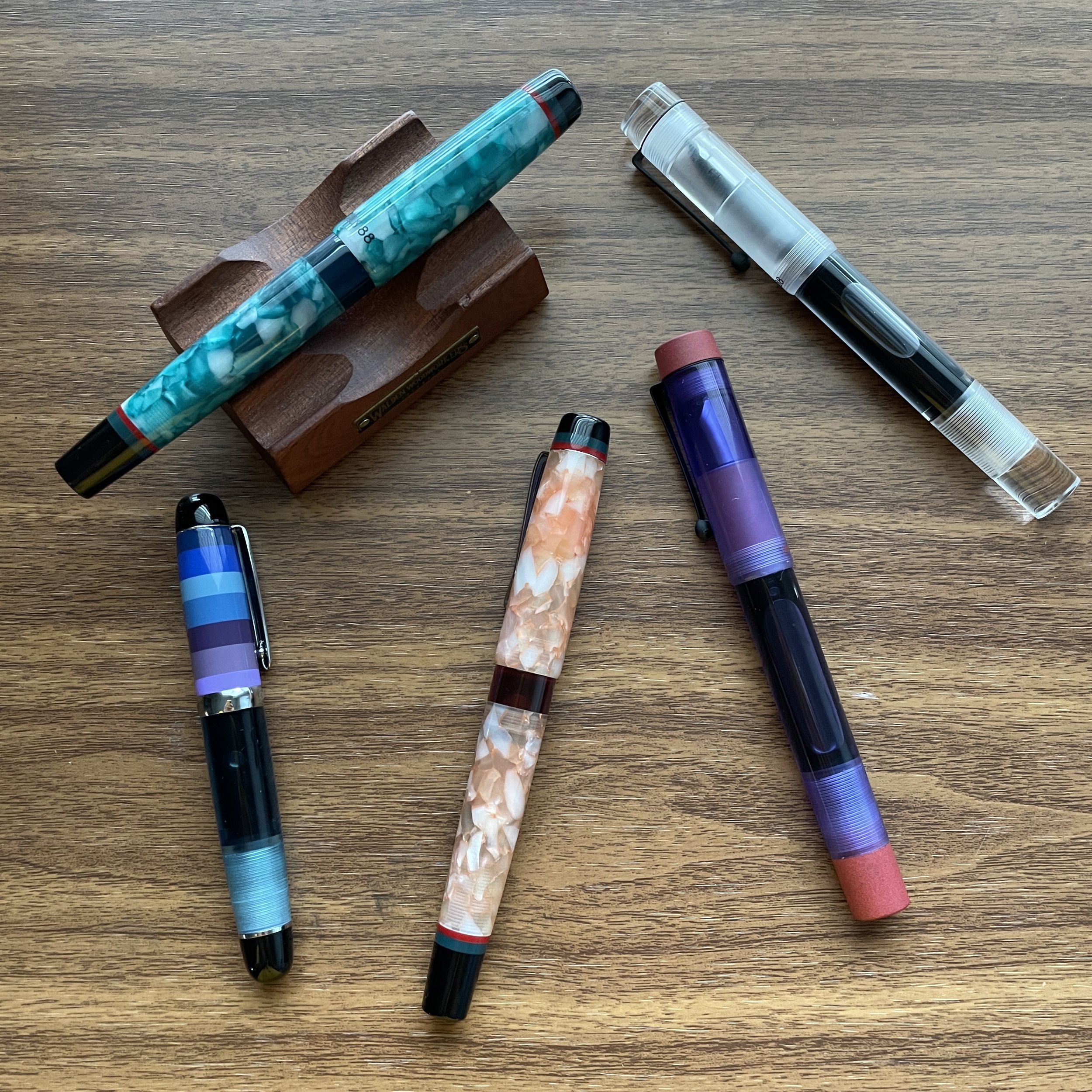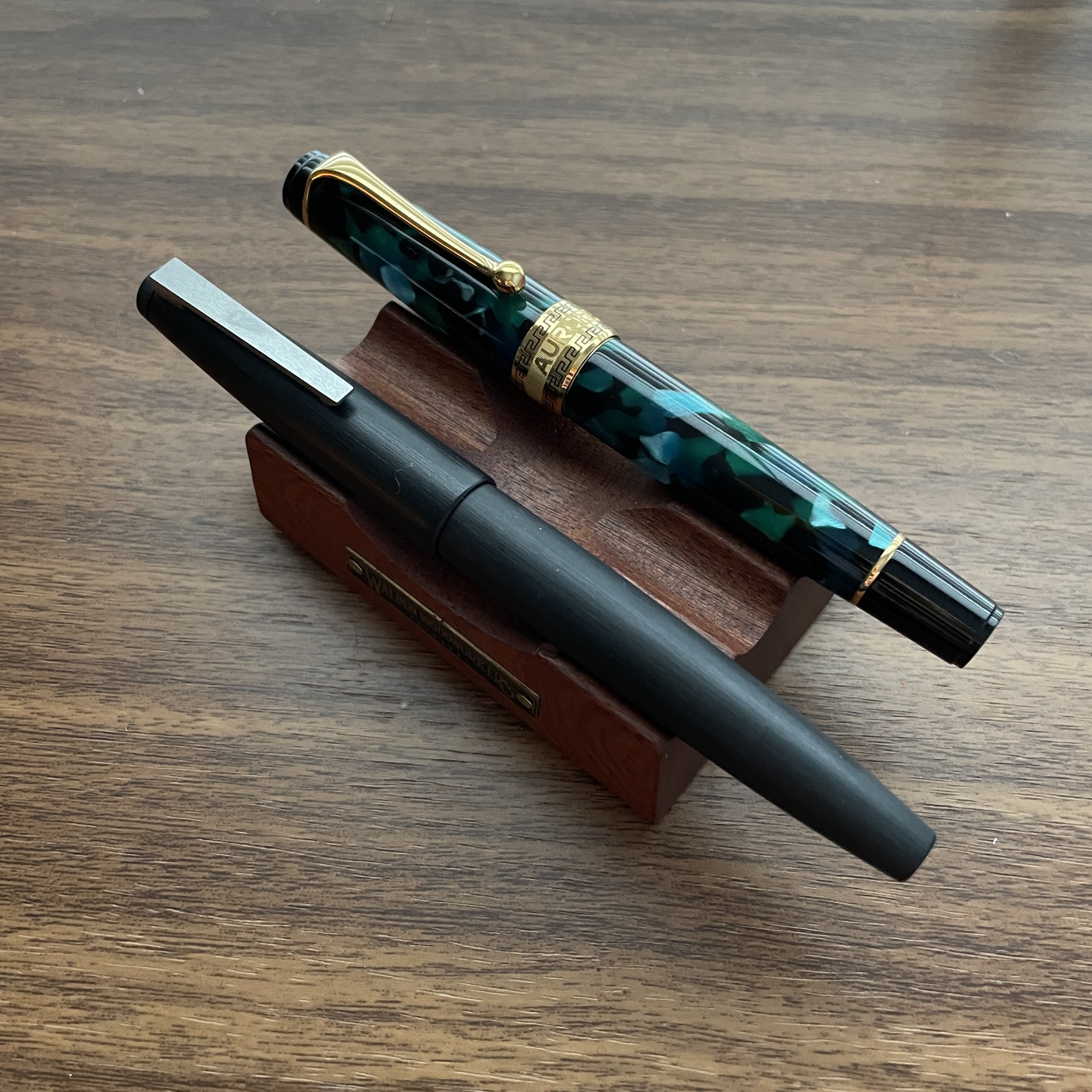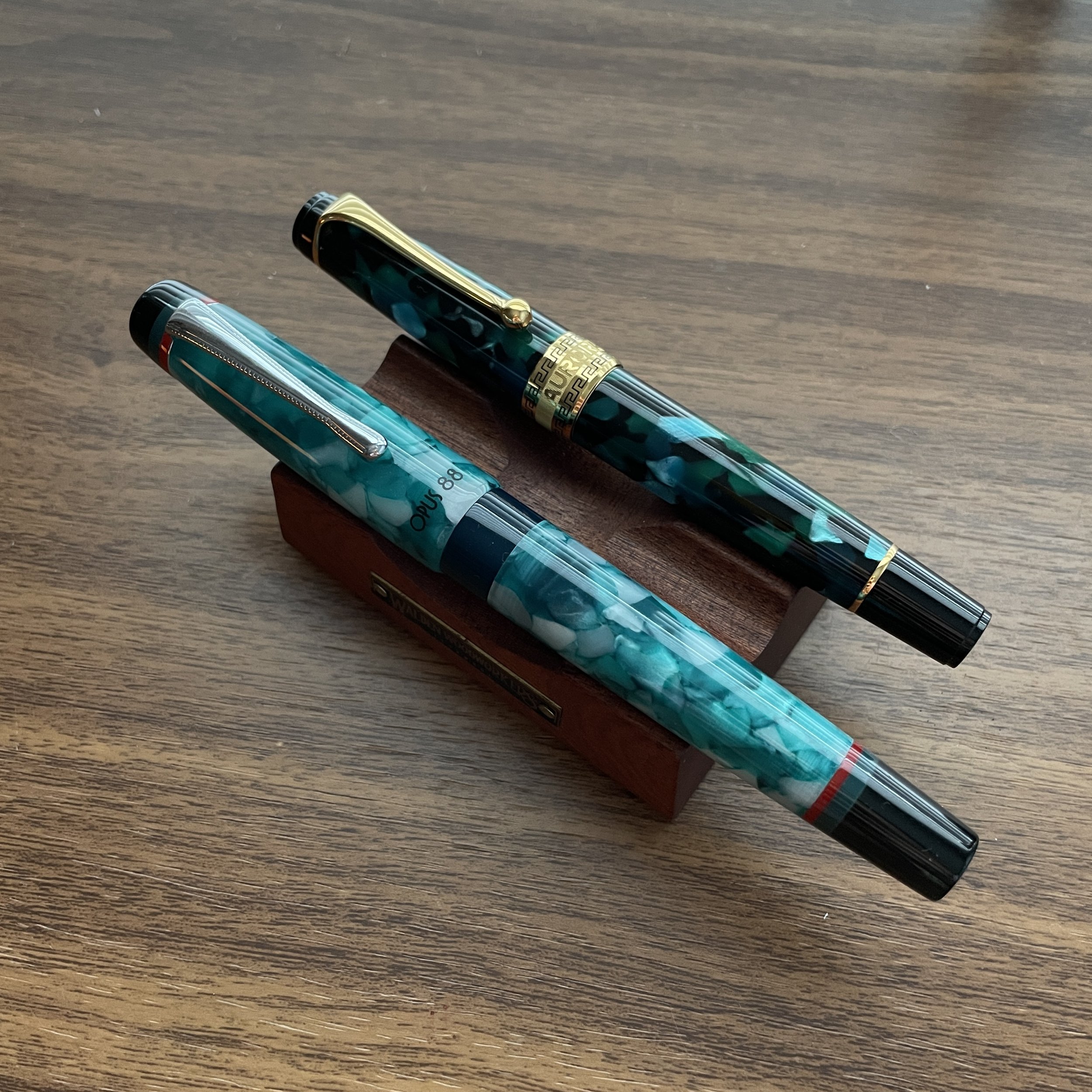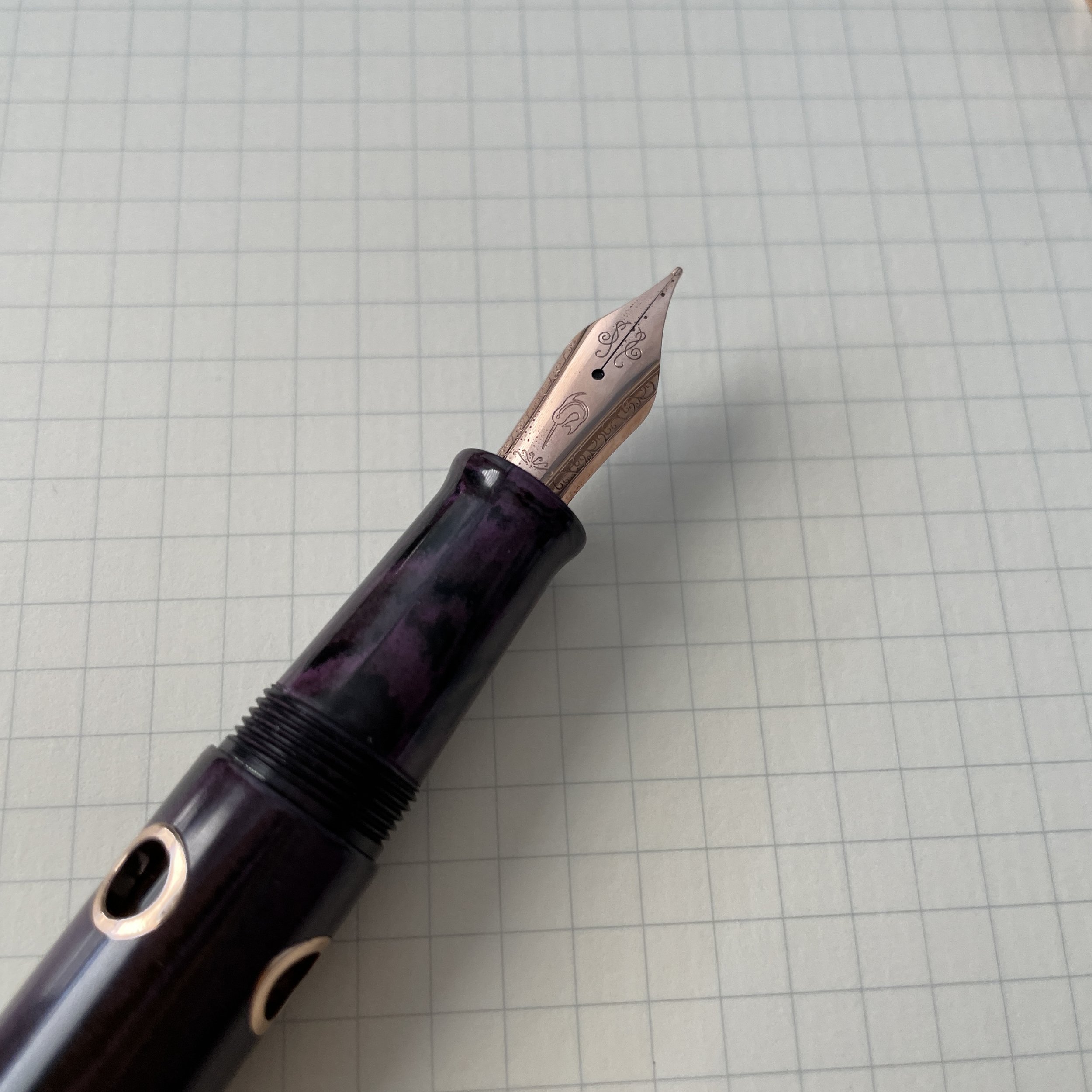Continuing my personal celebration of the ballpoint pen this week, I thought it might be fun to do something that I haven't done in a while: rank my favorite ballpoint refills. Despite what people may think, there’s actually quite a bit of variation between the different writing experiences available. Refills vary in terms of darkness, smoothness, and line width, though you’ll admittedly have a hard time finding the same range of bright colors as you can with gel pens. As my ballpoint usage has increased heavily in recent years, I’ve discovered some new favorite refills that I’d like to bring to the attention of ballpoint fans, especially those workhorse cartridges that don’t receive nearly the amount of attention they deserve.
Schmidt P900. At this year’s Washington D.C. Pen Show, I picked up one of the Gravitas “Twist” ballpoints in Ultem (which unfortunately does not appear to be available except in the standard clear polycarbonate finish). While most ballpoints that accept a Parker-style cartridge tend to ship with the Schmidt Easyflow 9000 (discussed further below), Ben Walsh includes the Schmidt P900F, which writes a finer, less “gloppy” line than the Easyflow. Sure, the latter is a smooth writer, but I prefer more precision. Lanier Pens on Amazon sells a four pack containing different colors in the F (.6mm) tip size, which costs just under $9. In addition to the Gravitas ballpoint, I now have these in all of my Baron Fig Squire pens.
Uniball Jetstream SXR-600. My second favorite refill, especially when I want to write small, is the Uniball Jetstream Parker-style cartridge in the .5mm tip size. (While it also comes in .38mm and .7mm sizes, the .5mm hits the sweet spot for me.) This particular refill lives in my Caran d’Ache 849 Rollerball. Though an excellent writer, the downside is that the cartridge can be pricey, ranging from $5 - $ 8.50 apiece depending on where you buy them. A similar writing experience can be found in the Jetstream D1 refills, as well as the white-labeled D1 refills used in the Penco “Perfection” series of pocket ballpoint pens.
Caran d’Ache Infinite 888 “Swissglide”. For longer writing sessions, you can’t beat Caran d’Ache’s “Swissglide” refill, which is sold only in the Caran d’Ache Infinite 888 pen. True to its name, the Swissglide writes a darker, smoother line than Caran d’Ache’s signature “Goliath” cartridge, and it’s almost as long lasting. Though the refill is proprietary to this particular pen, the Infinite ballpoint costs a mere $6.25, and additional refills only $3.
Ohto Needle-Tip (Mark’style Tous les Jours and Traveler’s Brass Ballpoint). I’ve written before on how I love needle-tip ballpoint pens for working in my planners, and for making tiny marginalia and annotation when I’m reading. The Japanese Ohto refills (which I know are used in the Mark’style pens and which I suspect are used in the Traveler’s Pens) are among my favorites, behaving similarly to Jetstream ink yet offering even more precision for writing and drawing due to the needle-tip. These refills are also incredibly inexpensive and long-lasting.
Caran d’Ache “Goliath” (i.e., the proprietary Caran d’Ache 849 Refill). If you’re looking for a rock-solid ballpoint that lays down a medium wet, moderately dark line and can go for years without drying out, the Caran d’Ache “Goliath” is an excellent choice. While on the expensive side, they are durable, don’t dry out easily, and therefore tend to last for an extremely long time. Plus you get the comfortable hexagonal writing experience of the iconic Caran d’Ache 849 ballpoint.
Writing samples from all five pens listed here, including four colors of the Schmidt P900F.
Takeaways and Final Thoughts
Of the five refills discussed in today’s post, the “new discoveries” that I’ve enjoyed using the most are the P900F and the Swissglide. Both are inexpensive workhorses that should tempt even the most die-hard gel or rollerball fan, namely because they require much less pressure to write than your typical ballpoint.
Though maybe a touch dry for pages of longhand writing, for annotating books and taking notes on thin journal/planner paper, it’s hard to beat a needle-tip pen.
Another encouraging trend that has emerged over the past few years has been better Parker-style ballpoint options. Pens such as the Caran d’Ache 849 Rollerball (which can transform into a “big 849 ballpoint”) and the Gravitas Twist both use this type of refill, as do many other kit pens and more generic ballpoints that people receive as gifts. The Schmidt P900 and Jetstream SXR-600 have not only allowed me to pull my “gift” pens - many of which have sentimental value - back into my regular rotation, but I’ve also converted many of my rollerballs because liquid ink rollerballs are among my least favorite writing options as they tend to bleed through everything.
The Schmidt Easyflow 9000 is a long-time favorite for many looking for a rollerball-like dark line, but in exchange for darkness you get smearing and a fair bit of “tip crud”.
Finally, why is the Schmidt Easyflow 9000 not on the list? Isn’t it the “best rollerball replacement option”? Not anymore, at least not to me. I personally find the Easyflow too oily, and it tends to gum up around the tip and leave streaks on the page. I consider both the P900F and the Jetstream to be superior options for pens that take Parker-style refills, but those who value “smoothness” above all else may still want to consider the Easyflow.
How about you? Is there a ballpoint refill option that I should be considering that doesn’t appear on this page? I’m interested, so leave a comment!
While this post does contain links to Amazon and other third parties, there are no paid affiliate links. The Gentleman Stationer is supported exclusively through purchases from the T.G.S. Curated Shop and the T.G.S. Patreon Program.

